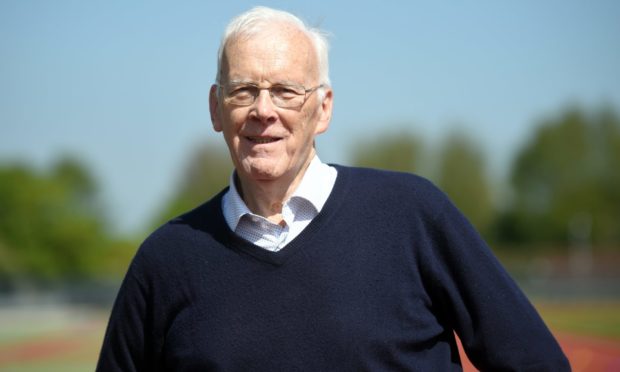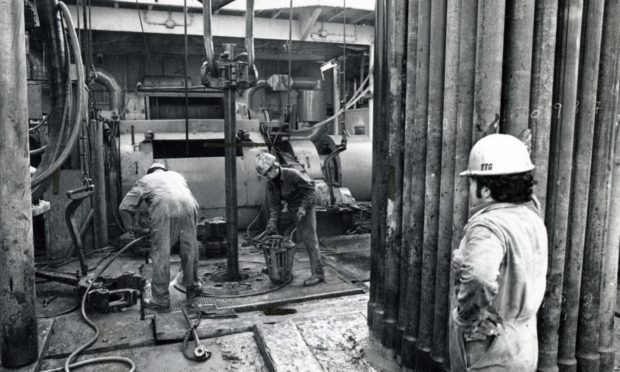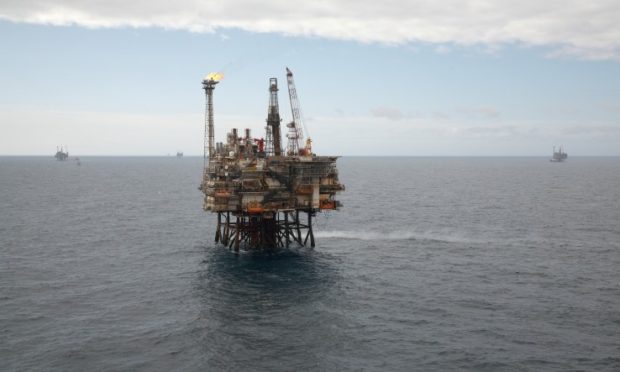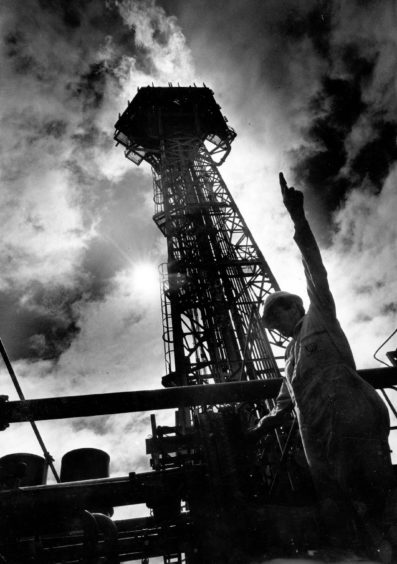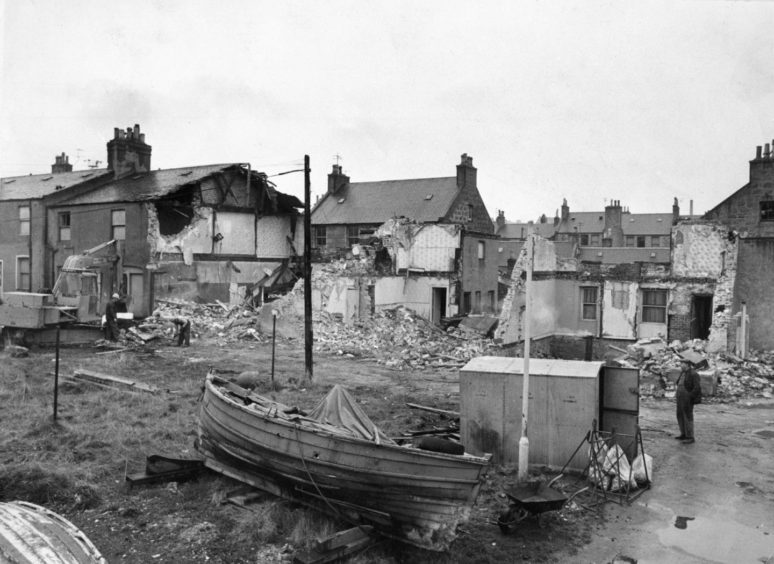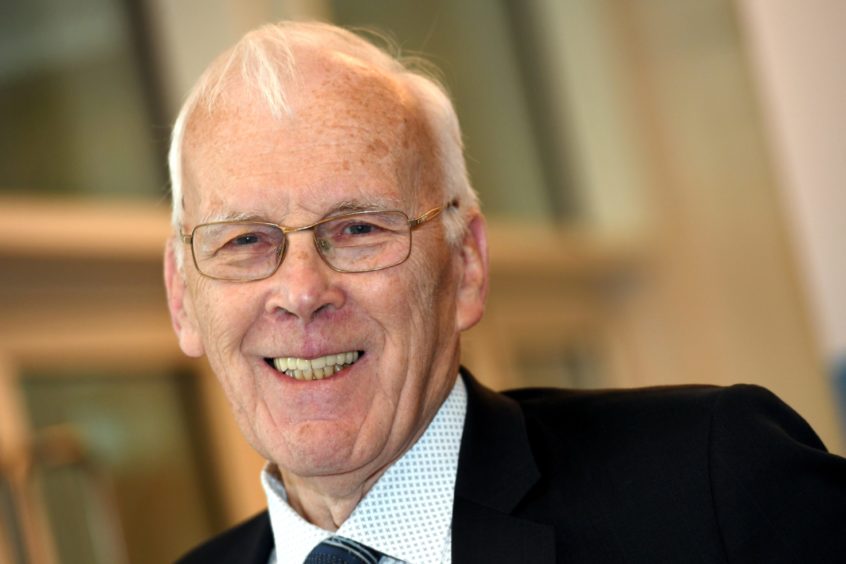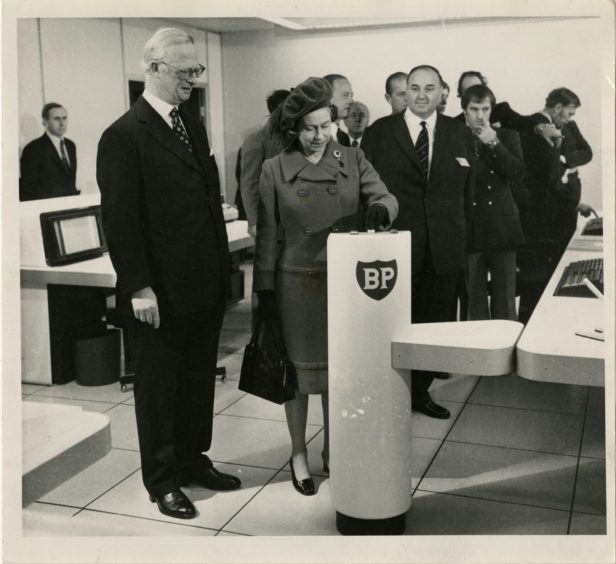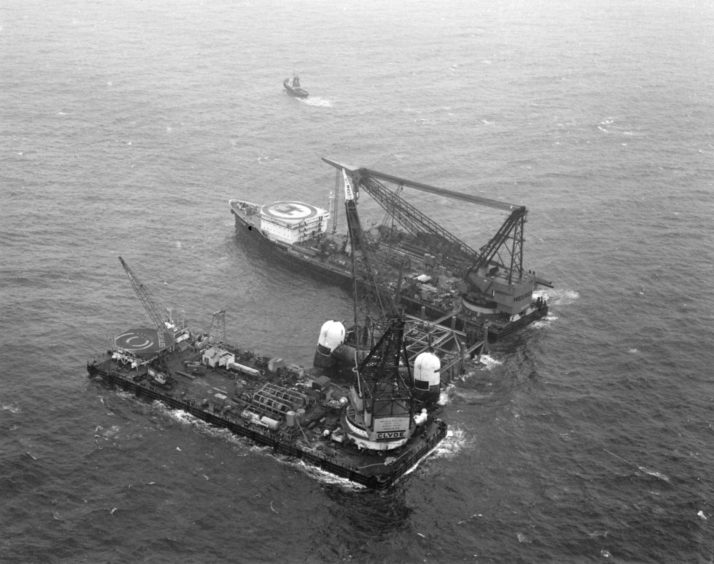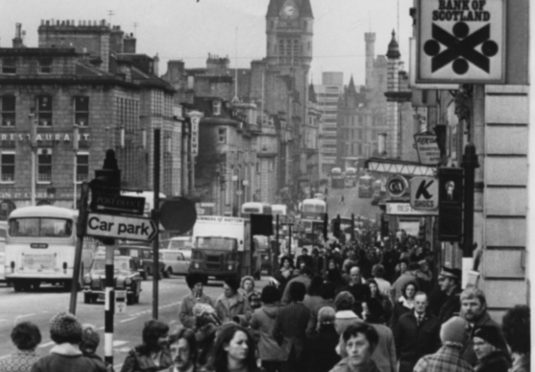It was a bold move into a brave new world; the discovery of oil in the Forties Field in the North Sea on October 7 1970.
Yet, as Sir Ian Wood recalls, there was no immediate Eureka moment when Aberdeen and the wider north east realised the dramatic consequences of this energy breakthrough.
On the contrary, the protagonists in the sector had to create a massive network of rigs where none existed and be innovative and inventive as they advanced into the blue yonder.
Unchartered territory
And when a group of BP executives arrived to witness the installation of the first structure, they were quite literally entering uncharted territory.
Sir Ian said: “I remember watching the live film of the Forties platform being taken out to the site and there was a group of BP senior management on a semi-submersible – I think it was a pontoon – and the camera strayed down to their hands.
“Without fail, all of them had their fingers crossed.
“It was a complete unknown as to what would happen, because this was the first time they had taken a structure of that size and tilted it, so they could get it on the sea bed.
“But they succeeded and that was the start. It was all really pioneering.”
One might have imagined the Aberdeen business population would have been thrilled at the news about the Forties Field as its potential for transforming the region crystallised.
Yet, according to Sir Ian, the initial response wasn’t exactly ecstatic when he was invited to take part in a discussion programme on the old Grampian TV channel.
He recalled: “I had no magic insights into how big this was going to be, yet I knew it was big enough that we had to get involved.
“But I appeared with maybe 15 or 20 other people from Aberdeen and about half of them were saying: ‘We don’t really want this’ or ‘We don’t want the disruption’ or ‘We don’t like all these strangers coming in’, especially the American wildcat guys, the people who did the frontline exploration in the North Sea.
“Fortunately, though, the Town Council took a very brave and a very surprising decision. There was a village called Old Torry which was quite an important part of Torry, right down by the water.
“The council bought the people out, pulled the buildings down, and built a number of marine facilities there, which became Shell’s base in Aberdeen and that was a big step forward.
“I don’t always take my hat off to councils, but that was a very positive thing.”
By any standards, Sir Ian has been one of the most successful entrepreneurs in the north-east’s oil and gas story.
Blunt response
He has been at the cutting edge of new technological developments in the sector.
He and his family established the Wood Foundation to benefit people around the world and the 77-year-old is a pivotal figure in the ongoing efforts of Opportunity North East to reinvigorate the industry and encourage youngsters to take up STEM – science, technology, engineering and mathematics – subjects to pursue their careers.
Yet, for all his achievements, Sir Ian has a blunt response to how he and his contemporaries have tackled the pressing issues which concern billions of people all around the world. As he told the Press and Journal, good intentions haven’t yielded positive rewards. Or at least, not on a scale with which he is satisfied.
He said: “I have always had some interest in philanthropy in terms of helping ways to help people less fortunate. I honestly believe we are all part of the same humanity and, for the limited time we have on Earth, we should be doing what we can to improve the world in no matter how small a way.
“Frankly, my generation has failed miserably in the challenge of enhancing the harmony, prosperity and wellbeing of mankind.
“It’s not that we don’t care, most people do care. But generally, we see the problem as too complex and, somehow, not really relevant to us. (The attitude is that) somebody else needs to solve the world’s problems.
“My increased interest in philanthropy came from from my latter days in the oil and gas industry when I spent time in Africa and South America. We didn’t have to travel far from the oil centres to witness utter poverty, despair and misery.
“Ten per cent of our world’s population lives in extreme poverty. There are 815 million suffering from serious hunger and three million deaths a year from undernutrition. More than five million children, under the age of five, die from curable illnesses with pneumonia and diarrhoea among the biggest killers, while 200 million children are malnourished and 72 million primary age children are not in education.”
Sir Ian has studied a wide range of reports from the likes of Unicef and the World Health Organisation. But nobody can accuse him of wringing his hands and ignoring these appalling statistics. In recent years, the Aberdonian has travelled around the globe and nurtured a wide range of initiatives in different countries.
His mission was to tackle directly the inequality and hopelessness which he found in many places and be the the catalyst for sparking progress in the developing world. Not through quick fixes and one-off grand schemes, but sustained investment at the grassroots to sow the seeds of enterprise for decades rather than months.
He added: “I had a vision and driving motivation to have some kind of beneficial impact and that’s why I set out to establish a serious philanthropic foundation.
“I, frankly, wasn’t at all sure where I was going or even how I might get there, but it wasn’t difficult to choose the African continent, because it is where I have seen some horrific iniquities, hardship and despair.
“We brought a business approach to looking at philanthropy in East Africa. After some market research, it seemed obvious that the best opportunity lay in agriculture and we chose tea and decided to look at Rwanda and Tanzania.
“We have built our own very strong management team and developed important partnerships. We’ve applied business principles and rigour with the whole focus being on the farmers significantly increasing their yield and quality of their product and thus their income. This is being used to extend their planted land, buy the family cow and provide improved schooling and medical care for their families.
“We are now working with more than 70,000 smallholder families. Two years ago, our first batch of tea farmers from six years ago – Mulindi and Shagasha in Rwanda – requested they have a Barazza, which is a celebration to say ‘thank you’.
“Across two events, 4,500 farmers turned up and spent four hours singing and dancing and giving testimonies to their significantly improved way of life. That was undoubtedly one of the highlights of our African philanthropic experience so far.”
Transformational change
Sir Ian is understandably proud of the heady brew which has been given succour since the initiative was launched. He is often portrayed as being a hard-nosed plutocrat, but he has a genuinely Micawberish attitude when he discusses the advances which have been made and not just by he and his colleagues on their forays abroad.
As he said: “Hand-out cannot and will not drive the kind of transformational change that is needed in the poorest areas of the world. Long-term vision and investment are both crucial.
“But I have also been inspired in my philanthropic time in Africa, dating back more than 10 years now, meeting some truly dedicated, self-effacing people – doctors, nurses, teachers, ministers. So-called ordinary people who, in fact, are quite extraordinary.
“They have been brought up in the developed world, but have given their lives to working in some of the poorest areas in Africa. They tend to have great courage, wisdom, heroism and dedication in what is truly missionary work.
“They ask for nothing, but give everything, and they are a fantastic example to us all.”
Sir Ian realises that the planet faces myriad problems in the future, even after coronavirus has finally been brought under control, and is striving to assist youngsters in being prepared to meet these challenges head-on.
He spoke warmly of the burgeoning success of the Wood Foundation’s Youth and Philanthrophy Initiative (YPI), which is now included on the curriculum of more than 275 secondary schools throughout Scotland.
But it’s clear he foresees many challenges in the future as the world continues to grapple with the unprecedented effects of the global pandemic.
He added: “I never remotely imagined I would spend six months of my life effectively locked up in my office, but I really hope we find a vaccine in the next three or four months.
“It’s holding us back and everything is slowing down. We still have a lot of rocks on the road, and now we have students in a very sad situation where young people came to university to be educated and now they are finding themselves isolated for weeks. It’s a tragedy.
“The government is spending a huge amount on this, but this will impact the economy significantly for the next three to five years, and we have to work to address that.
“After all, young people are the future, and there is nothing worse than a young person waking up in the morning and thinking the world doesn’t need them; it’s soul-destroying.
“So I think it’s very important that we do what we can to produce good quality employment and provide training all the way through. We are now trying to convert the oil and gas skills to renewables skills and young people are at the very heart of that.”
It’s half a century since the Forties was unearthed beneath the sea and Sir Ian said bluntly: “I’m not sure the oil and gas industry has been good at learning lessons from the regular cycle of downturns which have affected the north-east.”
However, he is not among those who believe the taps are running dry. Quite the opposite.
As he concluded: “I think we have 30 to 40 years left, with a gradual depletion (of oil). By 2050, we will be down to 20% (of the current production), but I’m not giving up on oil and gas. Aberdeen has been incredibly lucky, and it has been very positive for the region.
“We now have new energies coming in – including carbon capture, wind and hydrogen – and I think we have a reasonable chance of filling a lot of these jobs.
“So I am less concerned about Aberdeen than I have been for some time.”
